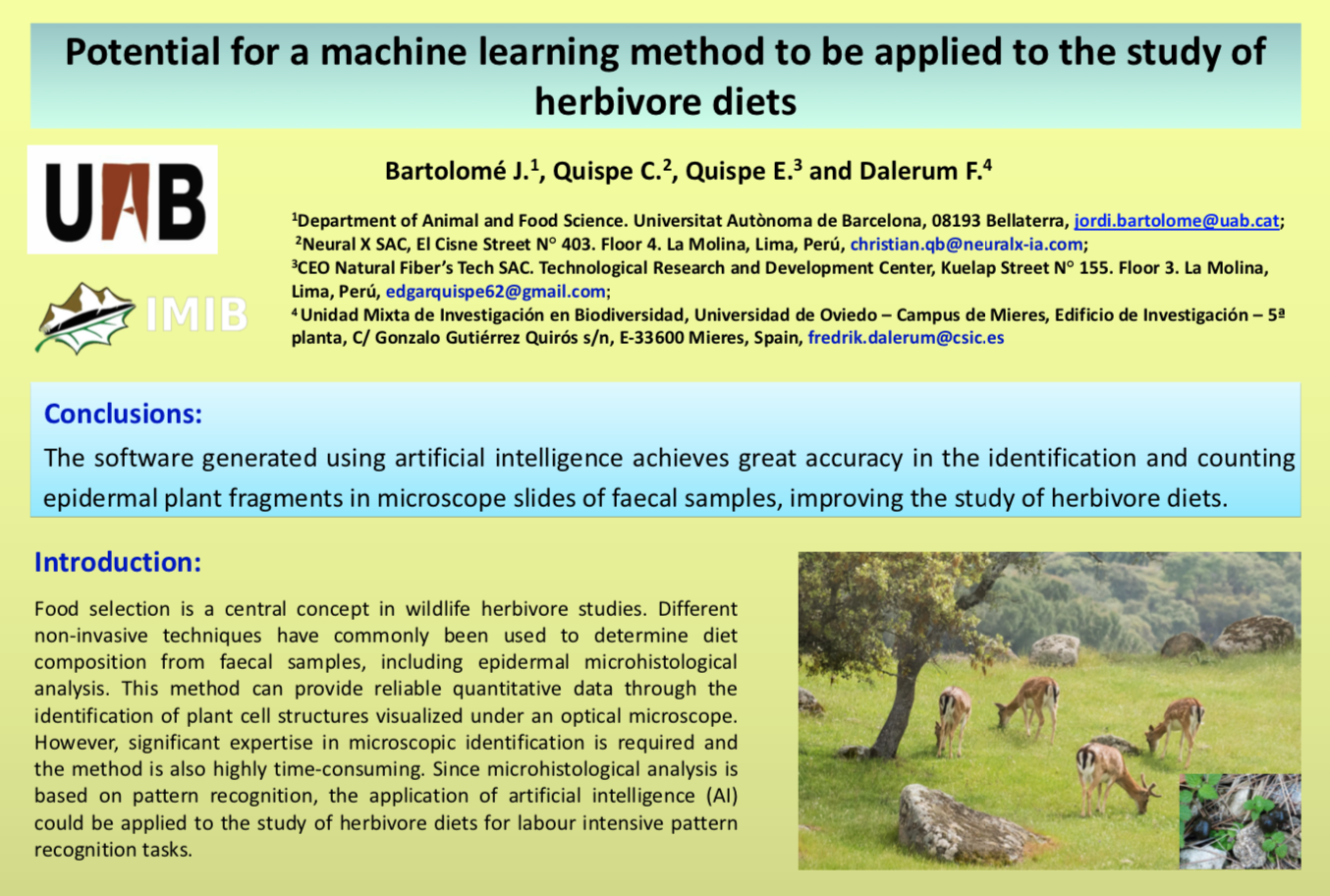
Potential for a machine learning method to be applied to the study of herbivore diets
Conclusions:
The software generated using artificial intelligence achieves great accuracy in the identification and counting epidermal plant fragments in microscope slides of faecal samples, improving the study of herbivore diets.
Introduction:
Food selection is a central concept in wildlife herbivore studies. Different non-invasive techniques have commonly been used to determine diet composition from faecal samples, including epidermal microhistological analysis. This method can provide reliable quantitative data through the identification of plant cell structures visualized under an optical microscope. However, significant expertise in microscopic identification is required and the method is also highly time-consuming. Since microhistological analysis is based on pattern recognition, the application of artificial intelligence (AI) could be applied to the study of herbivore diets for labour intensive pattern recognition tasks.
